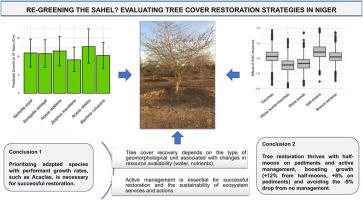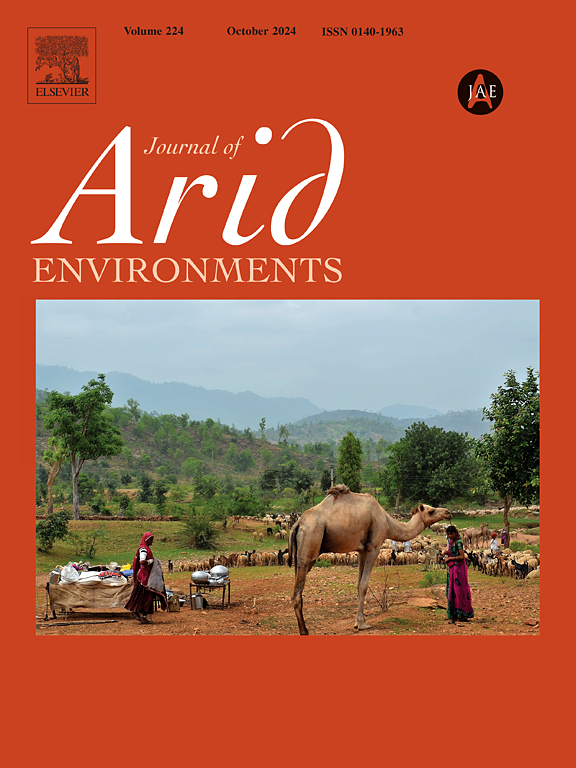Re-greening the Sahel? Evaluating tree cover restoration strategies in Niger
IF 2.5
3区 环境科学与生态学
Q2 ECOLOGY
引用次数: 0
Abstract
In the Sahel, land degradation caused by climate variability and unsustainable human activities has led to soil erosion, declining fertility, and worsening food insecurity. To address this, large-scale restoration initiatives incorporating soil and water conservation (SWC) techniques and drought-resistant tree species have been implemented. This study evaluated the growth of 1564 trees from six species (Acacia nilotica, Acacia raddiana, Senegalia senegal, Vachellia seyal, Bauhinia rufescens, and Ziziphus mauritiana) on rehabilitated lands, using a Bayesian growth model to assess the effects of SWC structures, management practices, and geomorphological conditions. Among the SWC techniques studied—half-moons, trenches, bench terraces, stone bunds, and trench-bund combinations—half-moons proved most effective in enhancing tree growth (+12 %). Pediments provided the best conditions for tree development, outperforming plateaus and slopes. The absence of site management (guarding, replanting, and maintenance of plants and structures) decreased growth (−9 %). Sustainable reforestation in the Sahel requires integrating scientific knowledge with local expertise, adaptive strategies, and community involvement. A holistic approach that prioritizes effective SWC structures, suitable planting sites, and continuous management is crucial for restoring degraded lands, strengthening ecosystem resilience, and ensuring long-term success.

重新绿化萨赫勒地区?评价尼日尔的树木覆盖恢复战略
在萨赫勒地区,气候变化和不可持续的人类活动造成的土地退化导致土壤侵蚀、肥力下降和粮食不安全状况恶化。为了解决这个问题,已经实施了包括水土保持(SWC)技术和抗旱树种在内的大规模恢复计划。本研究利用贝叶斯生长模型,评估了6种树种1564棵树木(尼罗刺槐、金合欢、塞内加尔刺槐、沙叶刺槐、紫荆和毛里求斯紫皮)在恢复土地上的生长情况,评估了SWC结构、管理实践和地貌条件的影响。在研究的SWC技术中——半月、沟、梯田、石垄和沟垄组合——半月被证明对促进树木生长最有效(+ 12%)。山墙为树木的生长提供了最好的条件,优于高原和斜坡。缺乏场地管理(保护、重新种植和维护植物和结构)降低了生长(- 9%)。萨赫勒地区的可持续再造林需要将科学知识与当地专业知识、适应性战略和社区参与相结合。优先考虑有效的SWC结构、合适的种植地点和持续管理的整体方法对于恢复退化土地、增强生态系统恢复力和确保长期成功至关重要。
本文章由计算机程序翻译,如有差异,请以英文原文为准。
求助全文
约1分钟内获得全文
求助全文
来源期刊

Journal of Arid Environments
环境科学-环境科学
CiteScore
5.70
自引率
3.70%
发文量
144
审稿时长
55 days
期刊介绍:
The Journal of Arid Environments is an international journal publishing original scientific and technical research articles on physical, biological and cultural aspects of arid, semi-arid, and desert environments. As a forum of multi-disciplinary and interdisciplinary dialogue it addresses research on all aspects of arid environments and their past, present and future use.
 求助内容:
求助内容: 应助结果提醒方式:
应助结果提醒方式:


